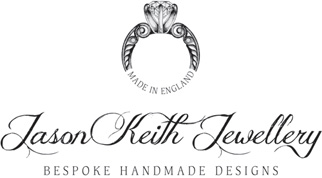Cleaning a Diamond Ring
Cleaning a Diamond Ring Let’s face it, when it comes to jewellery, we all generally think of diamonds. There is nothing quite like having a freshly cleaned ring on your finger fresh from a Jeweller. The light bouncing off your diamond just right can make you feel like a million dollars. So it’s only normal […]
Settings For Engagement Rings
Settings for engagement rings. So you’re looking to propose to your loved one, you head out to the high street or fire up the Mac to start looking and all of a sudden theres more than one type of Engagement ring available with just about any shape of diamond you can think of. Not only […]
A little history of Sapphires.
A Little History Of Sapphires Sapphires are one of my favourite gemstones, they’re quite hard, they come in various different colours and each colour comes in different shades and quality. My favourite shade has to be blue, especially when it sits next to a diamond. A vibrant Ceylon Sapphire can really be a beautiful […]
The FIFA World Cup Trophy.
The FIFA World Cup Trophy. As its the world cup, I thought i’d share a little information on the trophy that is presented to the winning team. I wanted to write a post that would share the information that I found out while researching the Trophies themselves. So we’ll start from the beginning. Back in […]
Queen Mary’s Diamond Bandeau Tiara
Queen Mary’s Diamond Bandeau Tiara So as Prince Harry and Megan Markle Recently Married I thought I would give a little insight into The Tiara she wore on her big day! Queen Mary’s Diamond Bandeau Tiara. The Diamond Tiara hasn’t been seen since 1965 when Princess Margaret wore it last. The Tiara was made in 1932. This […]
The Difference between Platinum and Gold
The difference between Gold and Platinum. The Difference between Platinum and Gold. Is Platinum really better than Gold? How strong is platinum really? These are just a couple of questions I’m going to tackle in this short but sweet post. To answer these questions we have to understand a little history of Precious Metals, how […]
Tanzanite And Diamond Ring
My Client and The Tanzanite Diamond Ring. My Client. First off I should say I love blue stones. So I was pretty excited to get a call to potentially make a Tanzanite and Diamond ring. My Client wanted something to wear on special occasions but without being to dramatic. They wanted a tanzanite, oval and […]
Diamond Halo Engagement Ring and Wedding Ring Set
Platinum and Diamond Engagement ring and wedding ring set.
Platinum Diamond Halo Engagement ring and Wedding ring set.
Diamond Halo Engagement ring and Wedding Ring Set
Diamond Shotgun Tie Bar
I absolutely loved making this White gold Diamond set Shotgun Tie Bar.
Making a Diamond Eternity ring
This Bespoke 18ct Yellow gold diamond Eternity ring was recently created for a very special client. Handmade with over 1.00ct of Princess cut diamonds set round the entire band.
1.06ct Platinum Diamond Engagement Ring
This Platinum 1.06ct Diamond Engagement Ring was created just before christmas ready for my client to propose on christmas day. Robert came to me with the idea of creating a classic engagement ring but with a modern twist. Such a lovely idea, and it works so well. Congratulations Robert and Julie.
Diamond Pendant
Recently I was approached by John to create a 30th birthday present for his wife.
Camera Cufflinks for a Photographer
Earlier this year Jason was commissioned to make a pair of cufflinks for a photographer’s 40th birthday.
